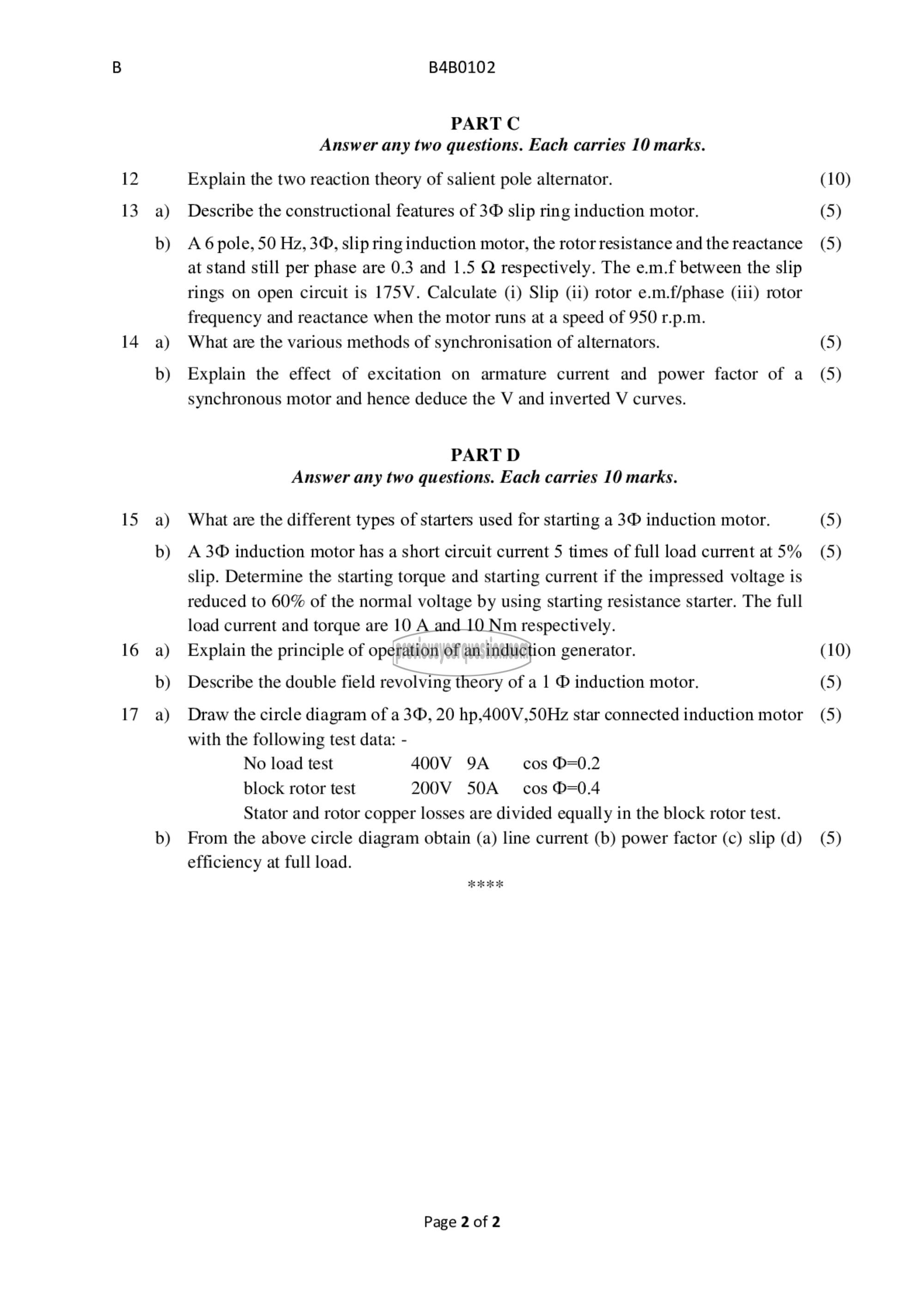APJ ABDUL KALAM TECHNOLOGICAL UNIVERSITY Previous Years Question Paper & Answer
Semester : SEMESTER 4
Subject : Synchronous and Induction Machines
Year : 2017
Term : JULY
Scheme : 2015 Full Time
Course Code : EE 202
Page:2
12
13
14
15
16
17
a)
b)
a)
b)
a)
b)
a)
b)
a)
b)
B4B0102
PART C
Answer any two questions. Each carries 10 marks.
Explain the two reaction theory of salient pole alternator.
Describe the constructional features of 3® slip ring induction motor.
A 6 pole, 50 Hz, 39, slip ring induction motor, the rotor resistance and the reactance
at stand still per phase are 0.3 and 1.5 Q respectively. The e.m.f between the slip
rings on open circuit is 175V. Calculate (i) Slip (ii) rotor e.m.f/phase (iii) rotor
frequency and reactance when the motor runs at a speed of 950 r.p.m.
What are the various methods of synchronisation of alternators.
Explain the effect of excitation on armature current and power factor of a
synchronous motor and hence deduce the V and inverted V curves.
PART 0
Answer any two questions. Each carries 10 marks.
What are the different types of starters used for starting a 30 induction motor.
A 30 induction motor has a short circuit current 5 times of full load current at 5%
slip. Determine the starting torque and starting current if the impressed voltage is
reduced to 60% of the normal voltage by using starting resistance starter. The full
load current and torque are 10 A and 10 Nm respectively.
Explain the principle of operation of an induction generator.
Describe the double field revolving theory of a 1 ® induction motor.
Draw the circle diagram of a 30, 20 hp,400V,50Hz star connected induction motor
with the following test data: -
No load test 400V 9A cos 0-0.2
block rotor test 20017 50۸ cos 0-4
Stator and rotor copper losses are divided equally in the block rotor test.
From the above circle diagram obtain (a) line current (b) power factor (c) slip (d)
efficiency at full load.
Page 2 of 2
(10)
(5)
(5)
(5)
(5)
(5)
(5)
(10)
(5)
(5)
(5)
